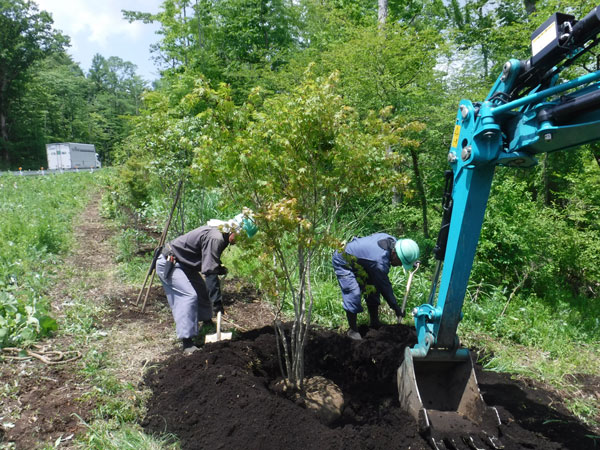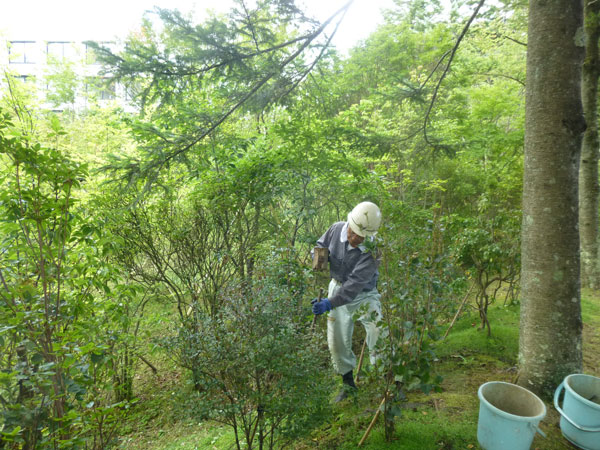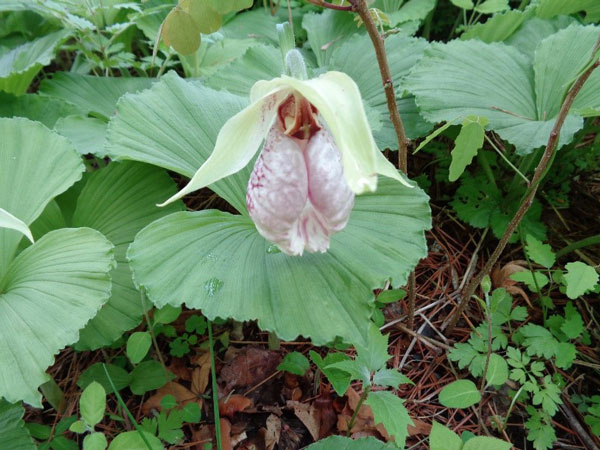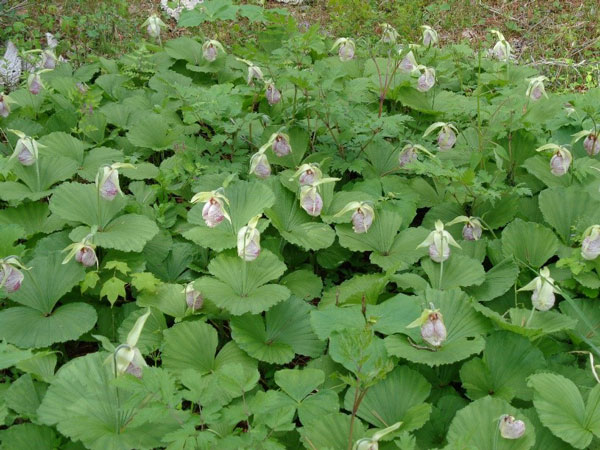Biodiversity
Basic Approach
Following on our basic vision of “leaving nature and resources to posterity”. FANUC is striving to maintain biodiversity, by preserving the stunning natural environment of 1.79 million square meters in which our Headquarters is located, adjacent to the Fuji-Hakone-Izu National Park.
Our Headquarters area is home to a variety of trees including native forests, as well as artificially planted Japanese larches and red pines, making it a treasure trove of wild birds, plants, and flowers. We will continue to take care of the forests and plant new trees, in order to protect the richness of the land around Mt. Fuji, a World Heritage Site.
Forest Conservation Activities
FANUC Headquarters is located in a stunning natural environment neighboring the Fuji-Hakone-Izu National Park. While the greening rate is specified in this area, we are striving to create a FANUC Forest that is more abundant than the designated green space rate. We maintain our forest on a daily basis, and as a result, the trees and flowers adorn the changing seasons, various wild birds and other small animals can be seen here.
When constructing factories and other buildings, we select locations with as few trees as possible, in order to minimize deforestation.
Furthermore, our use of land takes advantage of the natural terrain, and we make plans that maximize conservation of the environment, such as by ensuring that the heights of buildings do not exceed the height of the surrounding trees. Since parking lots require large areas of flat land, we are currently building multilevel parking lots in order to maintain the green space rate. In the construction of parking lots started in 2016, we have completed eight parking lots, comprising a total of 96,880 square meters of floor space and 3,570 parking spaces as of 2024. These multilevel parking lots have preserved 65,300 square meters of green space.
In conjunction with the construction of a new multi-story car park, 365 medium- and low-sized trees that could be transplanted within the area were transplanted to the side of the new path within the premises.
The green space ratio for the Headquarters area as of June 2025 is 38.6%.
Plan for Forest Restoration and Conversion into Broad-Leaved Forest
Demand for timber during the wartime regime and the period of rapid economic growth encouraged the planting of conifers, so most tree plantations are now coniferous. Parts of our Headquarters are also coniferous forests that were artificially planted. Our basic policy for green space management in the FANUC Headquarters is to convert these existing planted coniferous forests into a broad-leaved forest, which is better suited to this area, over the long-term. The current coniferous forests have been planted for many years with fast-growing red pines, larches and firs, etc., which are used as sand protection forests and to satisfy demand for timber. Our aim is to convert these artificially planted coniferous forests into rich forests where small birds and animals can coexist, by changing them into evergreen broad-leaved trees and broad-leaved forests suitable for the surrounding natural vegetation that blossom, bear fruit, and drop leaves.
In order to steadily achieve this goal, FANUC is cooperating with the Yamanashi Forestry and Forest Products Research Institute. We began implementing our plan to regenerate a forest that is suitable for the natural ecosystem of the area in 2015, and have planted trees since 2016. Because it is difficult for the trees to survive, we are engaging in the effort over the long term.
Since 2021, the overgrown tall trees in the forest have made it difficult to secure sunlight to low, and medium-sized hardwoods and other trees, so we have been thinning the tall coniferous trees as needed.


Forest That Absorbs CO2
Currently, the coniferous forest on the premises of the FANUC Headquarters is densely packed with trees, making it difficult for the sun’s rays to reach the forest interior. This means that new young trees receive insufficient exposure to sunlight. With such a high density of tall trees, it will become increasingly difficult for the coniferous forest to perform its inherent function as a forest. To prevent soil degradation and maintain the forest’s abundance, FANUC aims for creating a forest that can absorb more CO2. It will achieve this aim by thinning trees to ensure appropriate tree density and deliver sunlight to the forest interior.
As stated in the Plan for Forest Restoration and Conversion into Broad-Leaved Forest, because the existing forest was artificially planted with a single species of coniferous tall trees that have become old and absorb less CO2, we are making efforts to convert it into a mixed-species forest that includes native trees and to change gradually to original vegetation of this area. We are pursuing a plan to replant mainly evergreen broad-leaved trees (e.g., Japanese pieris and longstalk holly, which grow well on high ground), as well as cultivating deciduous broad-leaved trees that bear fruit, to create a habitat for small animals.
Conservation of Waterside Organisms
The FANUC Headquarters area has eight regulating ponds of various sizes that serve as temporary rainwater storage. Water is retained constantly in seven of these ponds and various species of waterweed, such as common reeds, blood irises, sweet flags, and skunk cabbage, are planted and protected to purify the water and create a habitat for waterside organisms. Weeding management of the ponds is conducted annually from the end of November to early December.
All regulating ponds are also weeded in summer and autumn, and the drainage outlets are managed as needed. Other works, such as status checking, inspection, repair, and cleaning are performed after typhoons and heavy rainfall.
Conservation of Rare Plant Species
In the Headquarters area, the Japanese cypripedium, which is designated as a threatened species II on the Red List by the Ministry of the Environment, grows wild. When the grounds maintenance plan affects the wild habitat, the plants are transplanted and protected.
In addition, weeding work is carried out while protecting wildflowers such as the rare species of Maianthemum dilatatum, Trillium tschonoskii, Cirsium purpuratum, and Cardiocrinum cordatum in the Headquarters area.

